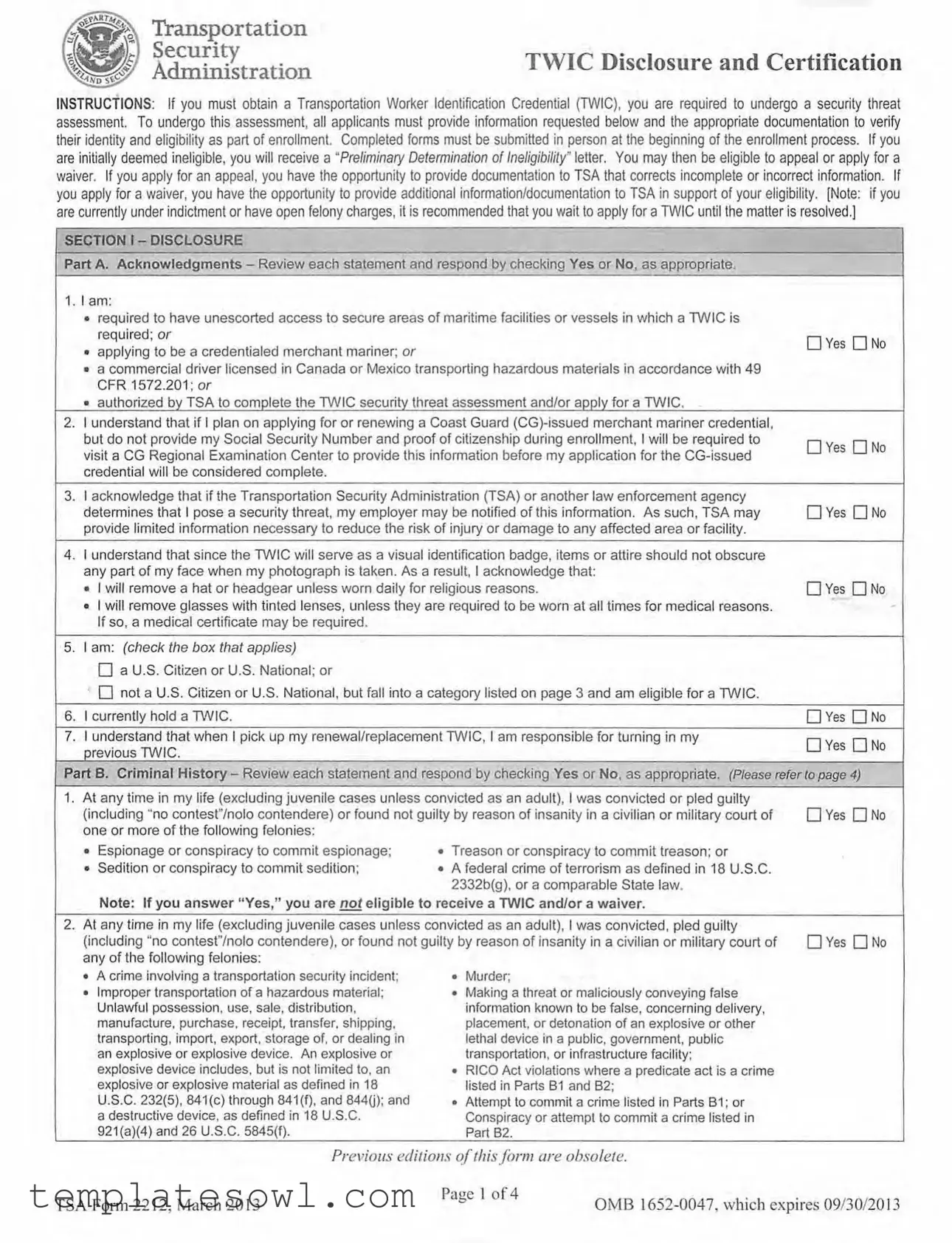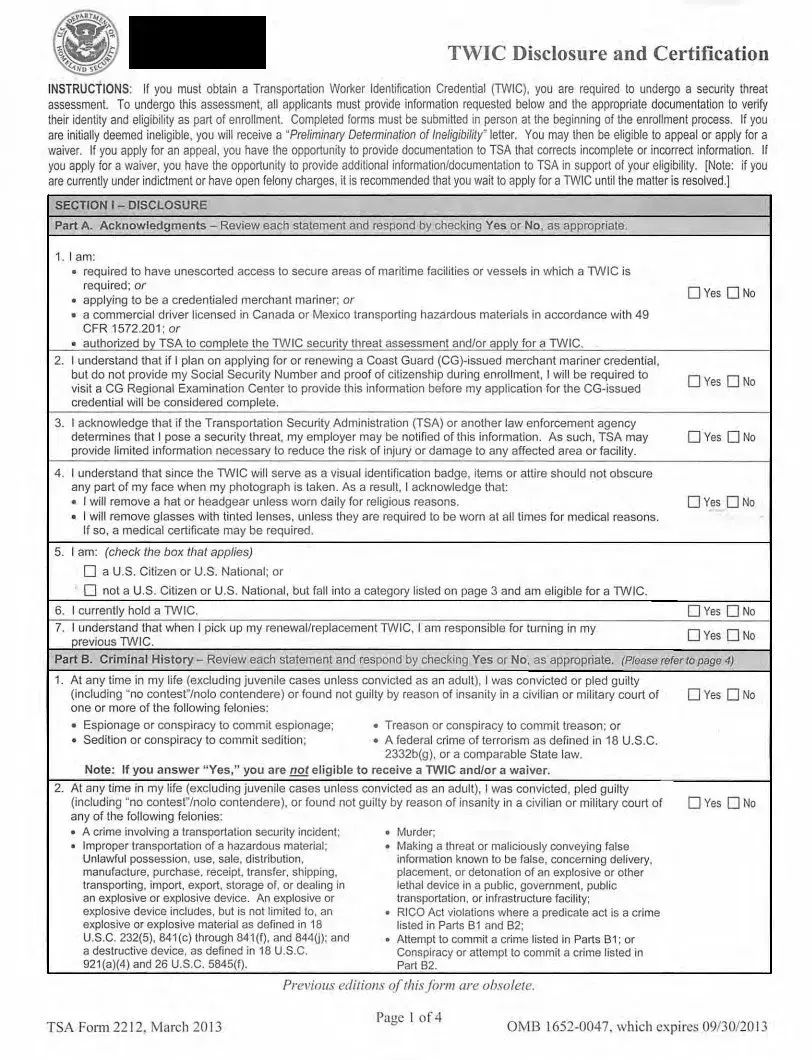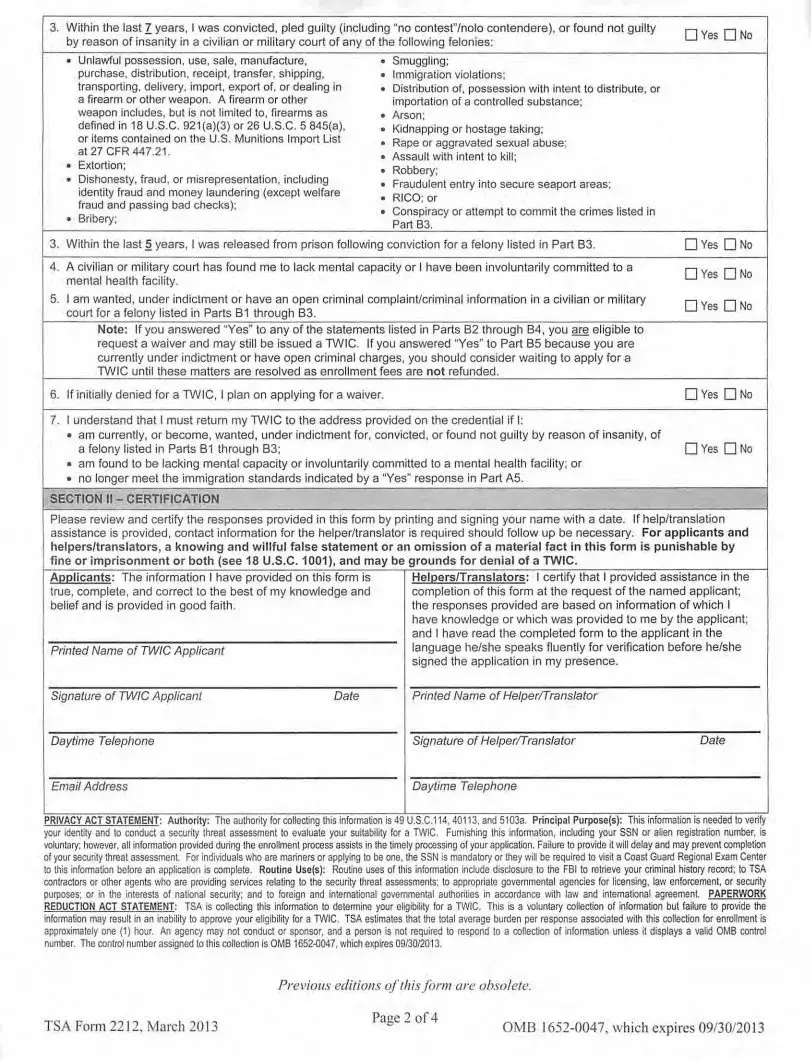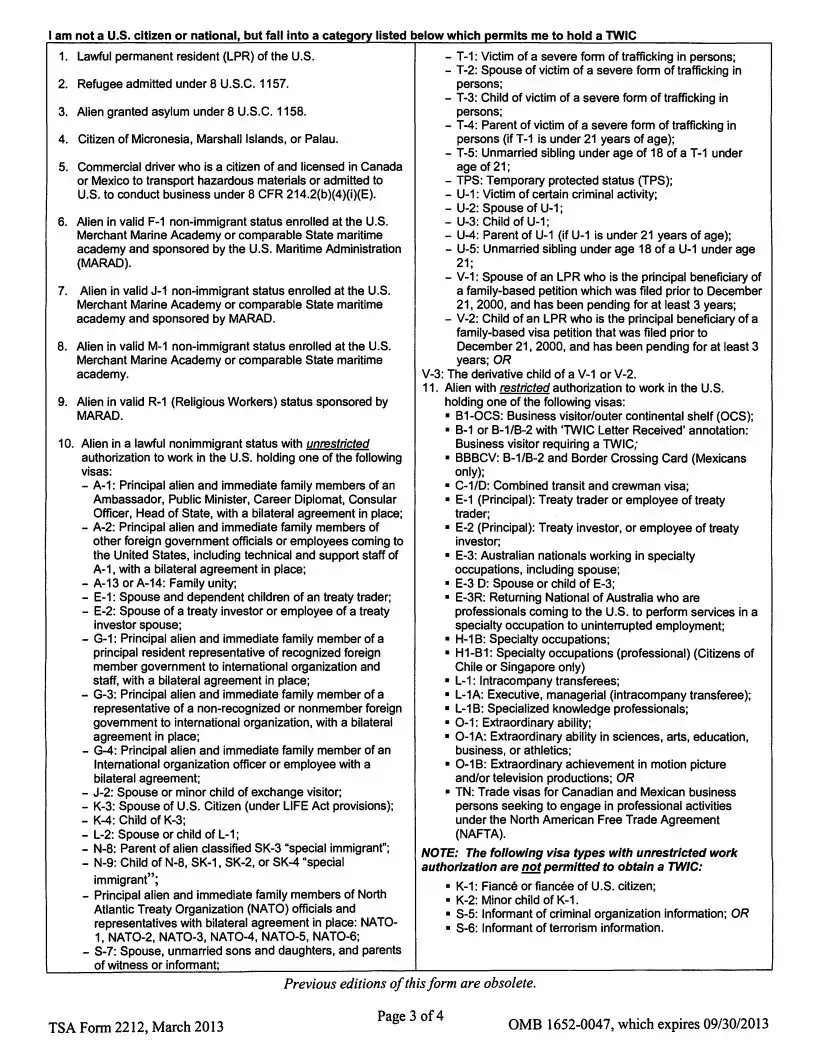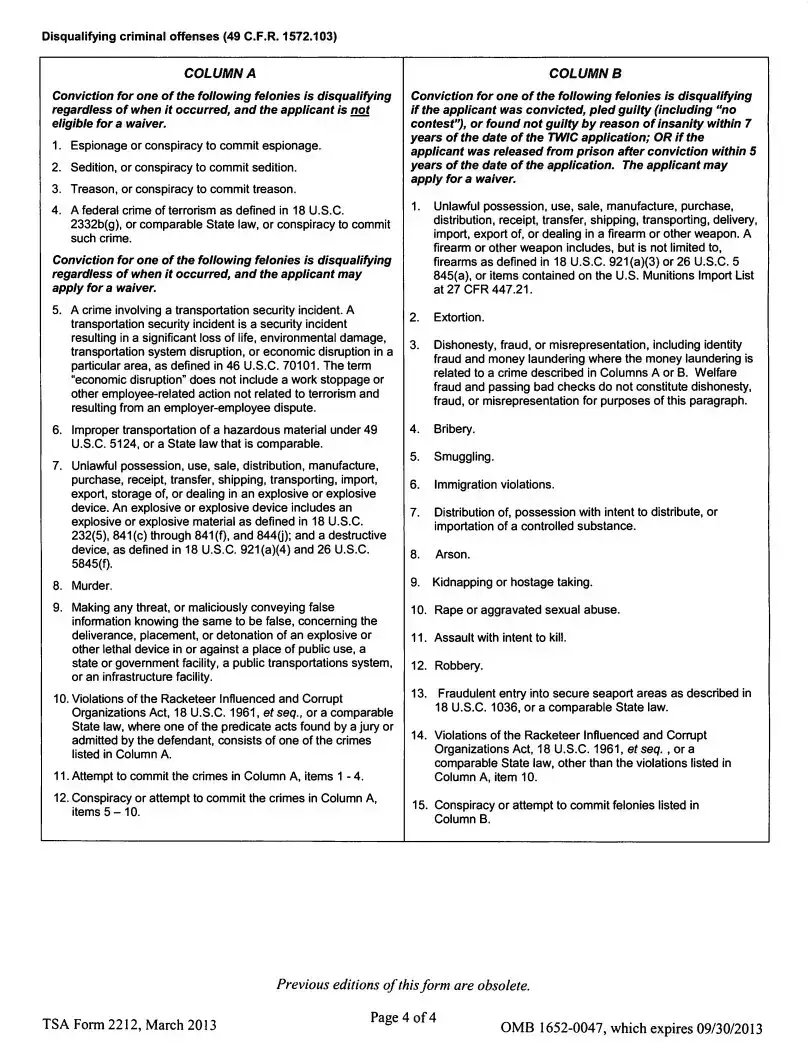1.Lawful permanent resident (LPR) of the U.S.
2.Refugee admitted under 8 U.S.C. 1157.
3.Alien granted asylum under 8 U.S.C. 1158.
4.Citizen of Micronesia, Marshall Islands, or Palau.
5.Commercial driver who is a citizen of and licensed in Canada or Mexico to transport hazardous materials or admitted to U.S. to conduct business under 8 CFR 214.2(b)(4)(i)(E).
6.Alien in valid F-1 non-immigrant status enrolled at the U.S. Merchant Marine Academy or comparable State maritime academy and sponsored by the U.S. Maritime Administration (MARAD).
7.Alien in valid J-1 non-immigrant status enrolled at the U.S. Merchant Marine Academy or comparable State maritime academy and sponsored by MARAD.
8.Alien in valid M-1 non-immigrant status enrolled at the U.S. Merchant Marine Academy or comparable State maritime academy.
9.Alien in valid R-1 (Religious Workers) status sponsored by
MARAD.
10. Alien in a lawful nonimmigrant status with unrestricted authorization to work in the U.S. holding one of the following visas:
-A-1: Principal alien and immediate family members of an Ambassador, Public Minister, Career Diplomat, Consular Officer, Head of State, with a bilateral agreement in place;
-A-2: Principal alien and immediate family members of other foreign government officials or employees coming to the United States, including technical and support staff of A-1 , with a bilateral agreement in place;
-A-13 or A-14: Family unity;
-E-1: Spouse and dependent children of an treaty trader;
-E-2: Spouse of a treaty investor or employee of a treaty investor spouse;
-G-1: Principal alien and immediate family member of a principal resident representative of recognized foreign member government to international organization and staff, with a bilateral agreement in place;
-G-3: Principal alien and immediate family member of a representative of a non-recognized or nonmember foreign government to international organization, with a bilateral agreement in place;
-G-4: Principal alien and immediate family member of an International organization officer or employee with a bilateral agreement;
-J-2: Spouse or minor child of exchange visitor;
-K-3: Spouse of U.S. Citizen (under LIFE Act provisions);
-K-4: Child of K-3;
-L-2: Spouse or child of L-1;
-N-8: Parent of alien classified SK-3 "special immigrant";
-N-9: Child of N-8, SK-1, SK-2, or SK-4 "special immigrant";
-Principal alien and immediate family members of North Atlantic Treaty Organization (NATO) officials and representatives with bilateral agreement in place: NAT0- 1, NAT0-2, NAT0-3, NAT0-4, NAT0-5, NAT0-6;
-S-7: Spouse, unmarried sons and daughters, and parents of witness or informant;
-T-1: Victim of a severe form of trafficking in persons;
-T-2: Spouse of victim of a severe form of trafficking in persons:
-T-3: Child of victim of a severe form of trafficking in persons;
-T-4: Parent of victim of a severe form of trafficking in persons (if T-1 is under 21 years of age);
-T-5: Unmarried sibling under age of 18 of a T-1 under ageof21;
-TPS: Temporary protected status (TPS);
-U-1: Victim of certain criminal activity;
-U-2: Spouse of U-1 ;
-U-3: Child of U-1;
-U-4: Parent of U-1 (if U-1 is under 21 years of age);
-U-5: Unmarried sibling under age 18 of a U-1 under age 21;
-V-1: Spouse of an LPR who is the principal beneficiary of a family-based petition which was filed prior to December 21, 2000, and has been pending for at least 3 years;
-V-2: Child of an LPR who is the principal beneficiary of a family-based visa petition that was filed prior to December 21, 2000, and has been pending for at least 3 years; OR
V-3: The derivative child of a V-1 or V-2.
11.Alien with restricted authorization to work in the U.S. holding one of the following visas:
•B1-0CS: Business visitor/outer continental shelf (OCS);
•B-1 or B-1/B-2 with 'lWICLetter Received'annotation: Business visitor requiring a TWIC;
•BBBCV: B-1/B-2 and Border Crossing Card (Mexicans only);
•C-1/D: Combined transit and crewman visa;
•E-1 (Principal): Treaty trader or employee of treaty trader;
•E-2 (Principal): Treaty investor, or employee of treaty investor;
•E-3: Australian nationals working in specialty occupations, including spouse;
•E-3 D: Spouse or child of E-3;
•E-3R: Returning National of Australia who are professionals coming to the U.S. to perform services in a specialty occupation to uninterrupted employment;
•H-1 B: Specialty occupations;
•H1-B1: Specialty occupations (professional) (Citizens of Chile or Singapore only)
•L-1: Intracompany transferees;
•L-1A: Executive, managerial (intracompany transferee);
•L-1 B: Specialized knowledge professionals;
•0-1: Extraordinary ability;
•0-1A: Extraordinary ability in sciences, arts, education, business, or athletics;
•0-1 B: Extraordinary achievement in motion picture and/or television productions; OR
•TN: Trade visas for Canadian and Mexican business persons seeking to engage in professional activities under the North American Free Trade Agreement (NAFTA).
NOTE: The following visa types with unrestricted work authorization are not permitted to obtain a TWIC:
•K-1: Fiance or fiancee of U.S. citizen;
•K-2: Minor child of K-1.
•S-5: Informant of criminal organization information: OR
•S-6: Informant of terrorism information.
